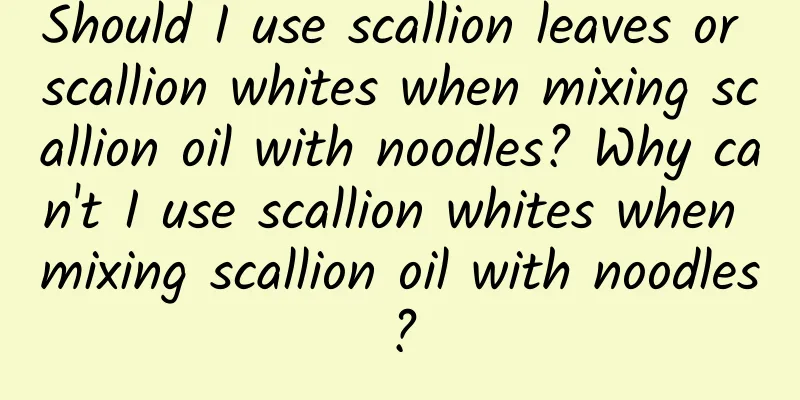Do you believe that you can judge the taste of lotus root by looking at the number of holes?

|
Lotus root is tender and crispy, and is delicious when made into pork ribs lotus root soup, lotus root dumplings, and sweet-scented osmanthus glutinous rice lotus root. However, when choosing lotus root, folk "experts" can judge its taste by the number of holes, such as "7-hole lotus root is soft and glutinous, 9-hole lotus root is crisp and sweet". Is this really the case? Is it reliable to judge the taste by the number of holes? Unreliable. The number of holes in lotus root has no direct relationship with the taste. The holes are the ventilation tissue of lotus root, and there is no rule for the number of holes. According to statistics, there are more than 200 varieties of lotus roots cultivated in my country, and some varieties of the same type have 7 holes, 9 holes, 11 holes, or even more holes, but the taste is the same. This is enough to show that the taste has nothing to do with the number of holes. How to judge the taste of lotus root? It depends on the variety and growth stage of lotus root. Generally, the later the lotus root is harvested, the softer and more glutinous it tastes. It can be divided into three categories: First, lotus root with a soft and glutinous taste, high starch content and strong viscosity is suitable for making soup, lotus root powder and osmanthus glutinous rice lotus root, etc. The common variety is E-Lian No. 5; second, lotus root with a sweet and crispy taste, low starch content and viscosity is suitable for cold salad or stir-fry, and the common variety is E-Lian No. 3; third, lotus root with a taste between soft and glutinous and sweet and crispy, and the common variety is E-Lian No. 4. There is a problem of excessive heavy metals Due to the rapid development of industry, agriculture and tourism, a large amount of "three wastes" are discharged into rivers and lakes, polluting aquatic plants. Some people are worried that lotus roots may contain excessive heavy metals, which may harm health. In response, relevant researchers sampled lotus roots on the market. 16 batches of lotus roots were collected from supermarkets and farmers' markets in a certain city. Tests showed that all of them contained heavy metals to varying degrees, but they were all within the range of the "National Food Safety Standard Limits of Contaminants in Food". This risk level is acceptable to adults, but children are advised to eat less. A total of 13 lotus root samples were collected from supermarkets in Baoding City, and their heavy metal content characteristics and health risks were evaluated. The results showed that inorganic arsenic, lead and cadmium in lotus roots exceeded the standard, reaching light pollution, and the heavy metal content was as follows: lotus root nodes > lotus root skin > lotus root flesh. Although there is no obvious health hazard, it is recommended to remove the skin and lotus root nodes when eating. Nutritional value of lotus root Rich in dietary fiber. According to the data of "Chinese Food Composition Table", lotus root contains 2.2 grams of insoluble dietary fiber per 100 grams, which is twice that of potatoes. The content depends on the variety. Studies have shown that the lotus root in Heze, Shandong has the highest dietary fiber content, about 7 grams per 100 grams. Dietary fiber can enhance satiety, promote gastrointestinal motility, prevent constipation, balance intestinal flora, and prevent intestinal diseases. Rich in potassium. Every 100 grams of lotus root contains 293 mg of potassium, while every 100 grams of Yunnan Red River lotus root contains up to 407 mg of potassium, which is 1.6 times that of bananas. Eating 100 grams of Yunnan Red River lotus root every day can meet 20% of the daily potassium requirement of the general population, which is very helpful for controlling blood pressure. Rich in vitamin C. A study comparing lotus roots from 10 origins found that the vitamin C content ranged from 50% to 70%. The vitamin C content of lotus roots from Huai'an, Jiangsu Province was 68 mg per 100 grams, which is comparable to that of Chinese cabbage, higher than that of oranges, and higher than that of potatoes, tomatoes, and Chinese cabbage. Very high in protein. Lotus root ranks among the top vegetables in terms of protein content, with 3.8 grams of protein per 100 grams of lotus root from Jingzhou, Hubei. However, lotus root lacks methionine and isoleucine in its amino acid nutrition evaluation, so it is best to eat it with seaweed and beans to improve the absorption and utilization of protein. There are some things to pay attention to when choosing in the market First, look at the appearance. Lotus roots are dug out of mud after all, so choose those with a full appearance and yellowish skin, even if there are some dirt or black spots. But beware of those with smooth and white skin, which may have been "processed". Second, check for damage. Check whether the lotus root skin is damaged. If there is damage, it is easy to deteriorate and difficult to store. It will also increase the probability of microbial contamination and may affect the taste. 3. Smell. Fresh lotus root has a fresh scent of soil. If you smell the peculiar smell of chemical reagents and sourness, don't buy it. In addition, cut lotus roots are prone to oxidation and discoloration. This is because lotus roots contain phenolic substances. When they are cut and exposed to enzymes and oxygen, enzymatic browning will occur. The quinones produced in this process will polymerize into colored substances, causing the cut surface to gradually turn brown. If you cannot cook it in time after cutting, soak it in clean water as soon as possible to prevent oxidation and maintain the color of the lotus root. Be careful when eating Do not eat it raw. Lotus root is an aquatic plant and may be contaminated with parasites and bacteria. It must be cooked and heated before it can be safely eaten. Reduce staple food. Lotus root contains 11.5 grams of carbohydrates per 100 grams, which is lower than potatoes, 1.4 times that of carrots, nearly 3 times that of white radishes, and 3.4 times that of Chinese cabbage. The calories are also higher than them. Therefore, if lotus root is included in the dish, the staple food should be reduced. (The author is a registered dietitian) |
Recommend
Uterine fibroids: the "invisible bomb" of women's health
The uterus is an important organ in the female re...
What to do if your period is delayed by 20 days
In modern society, there are more and more young ...
Reasons for delayed menstruation
Delayed menstruation happens to almost every woma...
How to prevent itching around the nipples
In order to prevent nipple itching, you must pay ...
What to do if you have heavy menstrual bleeding
We all know that women have a menstrual period ev...
The relationship between anemia and menstruation
Menstruation is a normal physiological phenomenon...
What should I do if I feel particularly painful on the first day of my period?
Dysmenorrhea is a very common condition for women...
What is the cause of heavy bleeding after medical abortion?
When the organs of the body are fully developed, ...
Can scanty menstruation lead to infertility? See the answers from authoritative experts
Small menstrual volume is a manifestation of irre...
How much does a prenatal check-up cost?
I believe that every female friend should go to s...
Did you have fetal movement every day at the beginning?
If a woman experiences fetal movement during preg...
Why is crucian carp soup white? How to make crucian carp soup
Crucian carp soup is a soup made with crucian car...
Why is there water flowing down there?
Adult women will have menstrual periods, and duri...
Vaginal itching, leucorrhea, tofu residue
I believe that many female friends often feel itc...
17 years old with small breasts
Women at the age of 17 are still in puberty, and ...









